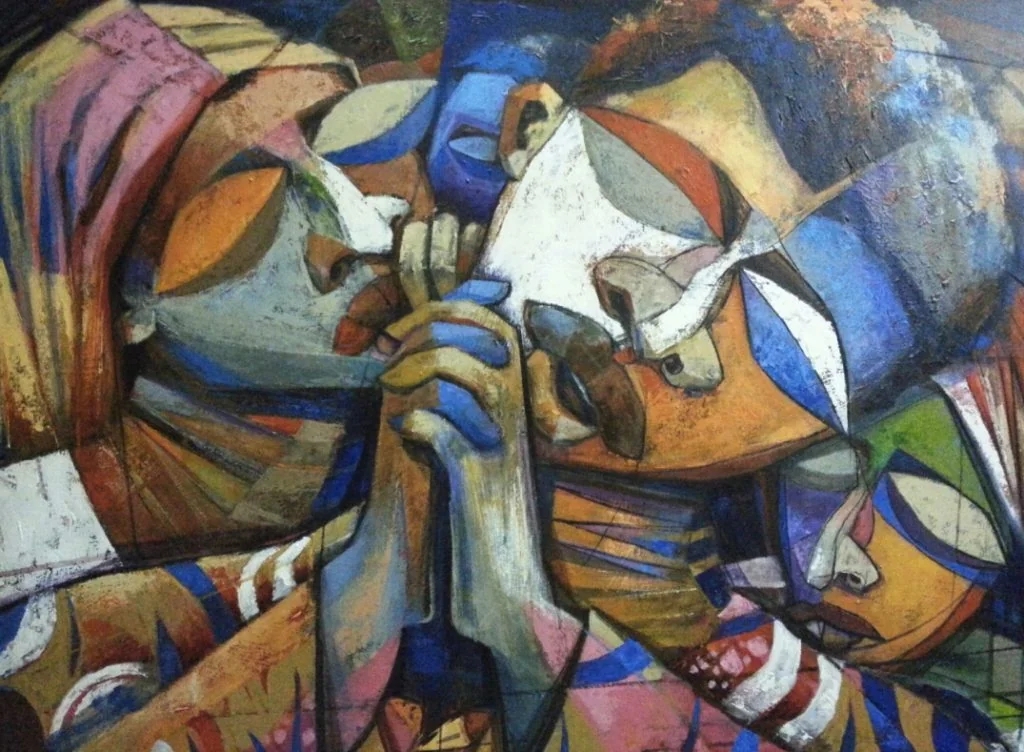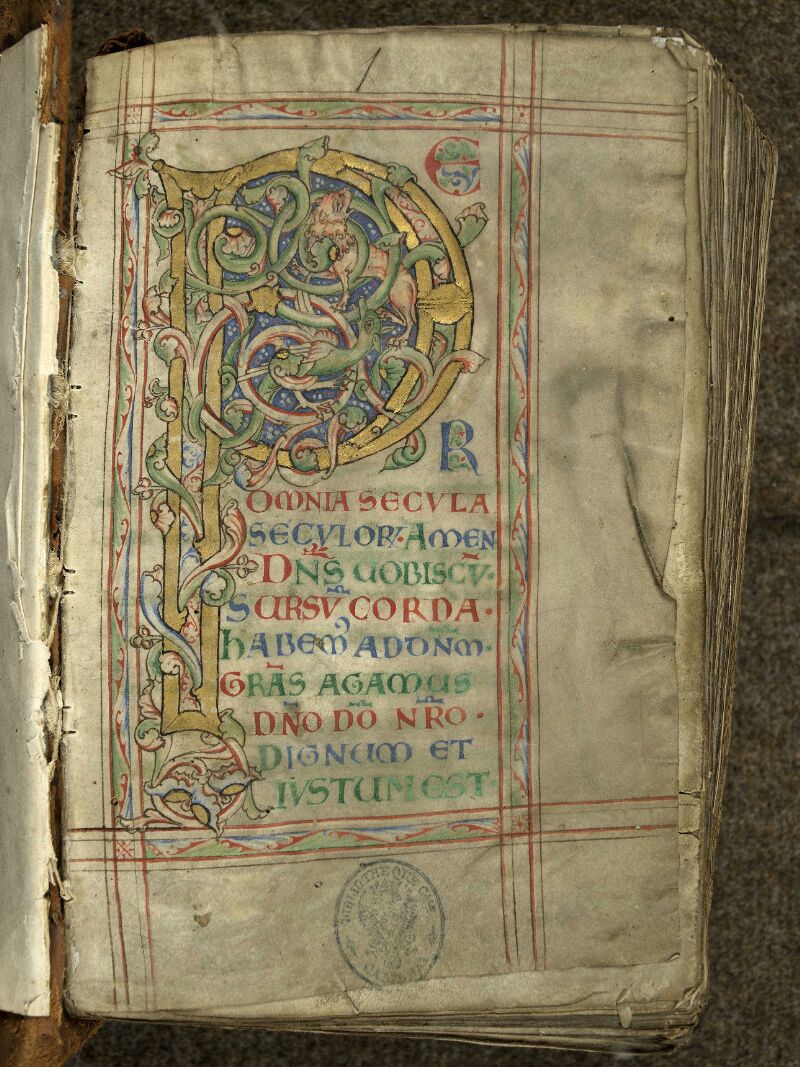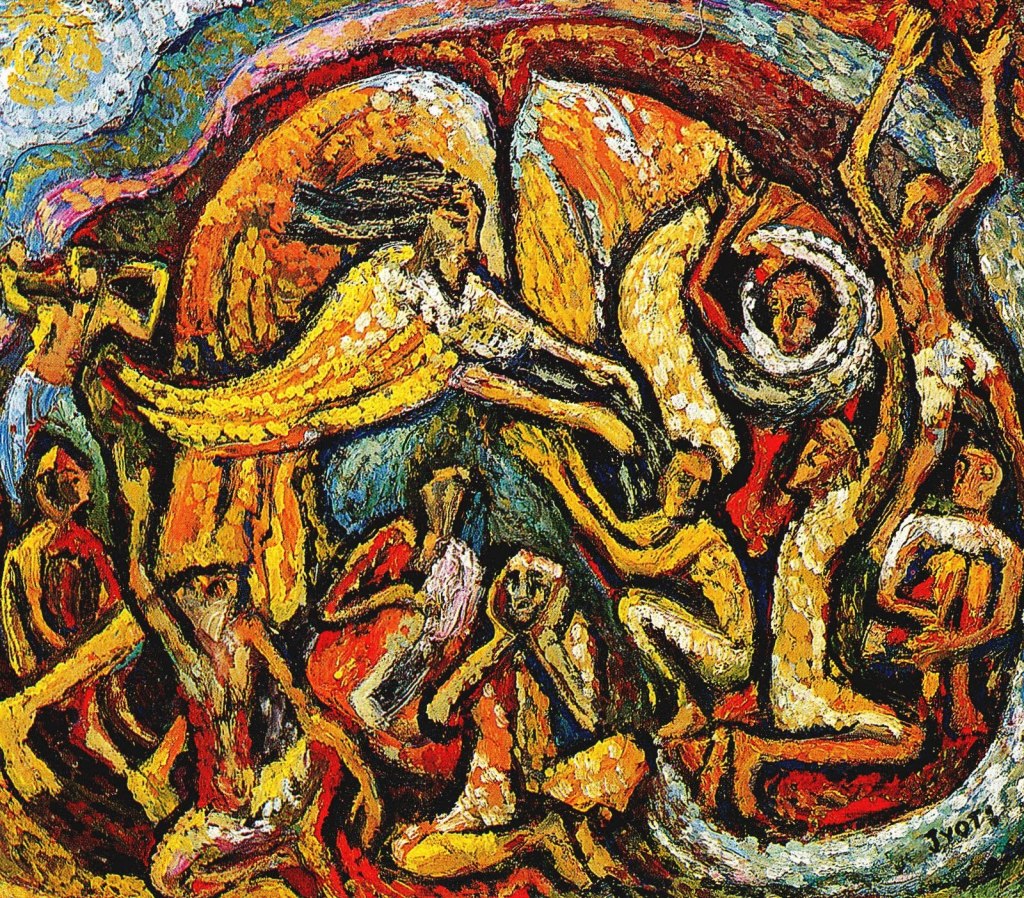A litany is a prayer consisting of a series of invocations and supplications by a pastor or other leader with alternate responses (text in boldface) by the congregation. Originally published in 1905, the following twenty-one-pronged litany is by the Rt. Rev. George Ridding (1828–1904), who in 1884 became the first bishop of Southwell in Nottinghamshire.

O Lord, open our minds to see ourselves as thou seest us, or even as others see us and we see others; and from all unwillingness to know our infirmities, save us and help us, we humbly beseech thee, O Lord.
From moral weakness of spirit, from timidity, from hesitation, from fear of others and dread of responsibility, strengthen us with the courage to speak the truth in love and self-control; and alike from the weakness of hasty violence and the weakness of moral cowardice, save us and help us, we humbly beseech thee, O Lord.
From weakness of judgment, from the indecision that can make no choice and the irresolution that carries no choice into act, and from losing opportunities to serve thee, save us and help us, we humbly beseech thee, O Lord.
From infirmity of purpose, from want of earnest care and interest, from the sluggishness of indolence and the slackness of indifference, and from all spiritual deadness of heart, save us and help us, we humbly beseech thee, O Lord.
From dullness of conscience, from a feeble sense of duty, from thoughtless disregard of consequences to others, from a low idea of the obligations of our Christian calling, and from all half-heartedness in our service for thee, save us and help us, we humbly beseech thee, O Lord.
From weariness in continuing struggles, from despondency in failure and disappointment, from an overburdened sense of unworthiness, from morbid fancies of imaginary backslidings, raise us to a lively hope and trust in thy presence and mercy, in the power of faith and prayer; and from all exaggerated fears and vexations, save us and help us, we humbly beseech thee, O Lord.
From self-conceit and vanity and boasting, from delight in supposed success and superiority, raise us to the modesty and humility of true sense and taste and reality; and from all the harms and hindrances of offensive manners and self-assertion, save us and help us, we humbly beseech thee, O Lord.
From affectation and untruth, conscious or unconscious, from pretense and acting a part, which is hypocrisy, from impulsive self-adaptation to the moment in unreality to please persons or make circumstances easy, strengthen us to simplicity; and from all false appearances, save us and help us, we humbly beseech thee, O Lord.
From love of flattery, from overready belief in praise, from dislike of criticism, from the comfort of self-deception in persuading ourselves that others think better than the truth of us, save us and help us, we humbly beseech thee, O Lord.
From all love of display and sacrifice to popularity, from thought of ourselves and forgetfulness of thee in our worship, hold our minds in spiritual reverence; and in all our words and works from all self-glorification, save us and help us, we humbly beseech thee, O Lord.
From pride and self-will, from the desire to have our own way in all things, from an overweening love of our own ideas and obliviousness to the value of others, enlarge the generosity of our hearts and enlighten the fairness of our judgments; and from all selfish arbitrariness of temper, save us and help us, we humbly beseech thee, O Lord.
From all jealousy, whether of equals or superiors, from grudging others’ success, from impatience of submission and eagerness for authority, give us the spirit of kinship to share loyally with fellow workers in all true proportions; and from all insubordination to law, order, and authority, save us and help us, we humbly beseech thee, O Lord.
From all hasty utterances of impatience, from the retort of irritation and the taunt of sarcasm, from all infirmity of temper in provoking or being provoked, from love of unkind gossip, and from all idle words that may do hurt, save us and help us, we humbly beseech thee, O Lord.
In all times of temptation to follow pleasure, to leave duty for amusement, to indulge in distraction and dissipation, in dishonesty and debt, to degrade our high calling and forget our Christian vows, and in all times of frailty in our flesh, save us and help us, we humbly beseech thee, O Lord.
In all times of ignorance and perplexity as to what is right and best to do, direct us, O Lord, with wisdom to judge aright; order our ways and overrule our circumstances as thou canst in thy good providence, and in our mistakes and misunderstandings, save us and help us, we humbly beseech thee, O Lord.
In times of doubts and questionings, when our belief is perplexed by new learning, new thought, when our faith is strained by creeds, by doctrines, by mysteries beyond our understanding, give us the faithfulness of learners and the courage of believers in thee; alike from stubborn rejection of new revelations and from hasty assurance that we are wiser than our forebears, save us and help us, we humbly beseech thee, O Lord.
From strife and partisanship and division among thy people, from magnifying our certainties to condemn all differences, from all arrogance in our dealings with others, save us and help us, we humbly beseech thee, O Lord.
Give us knowledge of ourselves, our powers and weaknesses, our spirit, our sympathy, our imagination, our knowledge, our truth; teach us by the standard of thy Word, by the judgments of others, by examinations of ourselves; give us the earnest desire to strengthen ourselves continually by study, by diligence, by prayer and meditation; and from all fancies, delusions, and prejudices of habit, temper, or society, save us and help us, we humbly beseech thee, O Lord.
Give us true knowledge of other people in their differences from us and in their likenesses to us, that we may deal with their real selves, measuring their feelings by our own but patiently considering their varied lives and thoughts and circumstances; and in all our relations to them, from false judgments of our own, from misplaced trust and distrust, from misplaced giving and refusing, from misplaced praise and rebuke, save us and help us, we humbly beseech thee, O Lord.
Chiefly, O Lord, we beseech thee, give us knowledge of thee, to see thee in all thy works, always to feel thy presence near, to hear and know thy call. May thy Spirit be our spirit, thy words our words, and thy will our will, and in all shortcomings and infirmities may we have sure faith in thee. Save us and help us, we humbly beseech thee, O Lord.
Finally, O Lord, we humbly beseech thee, blot out our past transgressions, heal the evils of our past negligences and ignorances, make us amend our past mistakes and misunderstandings; uplift our hearts to new love, new energy and devotion, that we may be unburdened from the grief and shame of past faithlessness to go forth in thy strength to persevere through success and failure, through good report and evil report, even to the end; and in all time of our tribulation, in all time of our prosperity, save us and help us, we humbly beseech thee, O Lord.
Source: George Ridding, A Litany of Remembrance, Compiled for Retreats and Quiet Days for His Clergy (London: Bemrose and Sons, 1905) [HT]






























